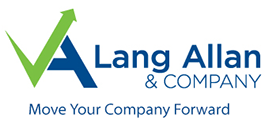
The Internal Revenue Code (IRC) allows taxpayers to claim a business deduction for expenses arising from the qualified use of all or part of a residence, as long as certain conditions are met. This deduction can be a particularly attractive tax planning tool for those who meet one of the following requirements:
- The home office is the taxpayer’s principal place of business. A home office must be used regularly and exclusively to conduct business. Consequently, working on the kitchen table (which is also used for purposes other than work) doesn’t qualify, but a desk set up in a bedroom might.
- The home office is where the taxpayer meets patients, clients, or customers in the regular course of business. This can be difficult to assess if the taxpayer operates out of different locations. In such cases, the IRS will look at things like the amount of time spent at the location. To assess where the principal place of business is, if a taxpayer has multiple work locations, consider the relative importance of the activities conducted in each location, the amount of time spent there, and whether another fixed location might compete as the principal place where work is done.
- A separate structure not attached to the dwelling and used in connection with the business may qualify.
- If the dwelling is the only fixed location of the taxpayer’s business, a space within it that is used regularly to store the business’s inventory or product samples may qualify as a home office.
These considerations generally apply to the self-employed, because employees who work from home are not entitled to claim a home office deduction even if the employer requires the employee to maintain a home office. (The 2017 Tax Cuts and Jobs Act eliminated employees’ ability to deduct unreimbursed job-related expenses paid with personal funds as miscellaneous itemized deductions.)
The following is something of an exception to this rule: if the employer sets up an “accountable plan,” which reimburses workers for business expenses, that reimbursement is not counted as income, and it is not subject to withholding or reported on the employee’s W-2. When setting up the plan, the employer must:
- Ensure that reimbursed expenses are business-related,
- Substantiate the expenses within a reasonable period, and
- Make sure that any unspent funds are returned to the employer within a reasonable period.
This means that to avoid raising red flags for the IRS that can result in the plan being treated as a nonaccountable plan, the business owner must set up the plan carefully, fully document all associated expenses and comply with any limitations or restrictions associated with deductible expenses.
Ultimately, the point is that an accountable plan is a simple way to shift the deductibility of business expenses from the employee to the employer and offers the ability to mitigate tax liability by allowing business owners to choose which expenses are reimbursable and which employees will be eligible to submit reimbursements.
These rules can get complicated, so be sure to work with a professional on these, and all home office tax issues. Call us today.
